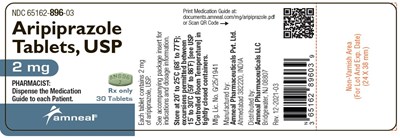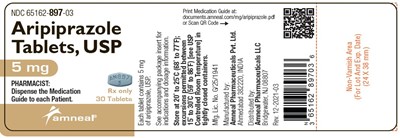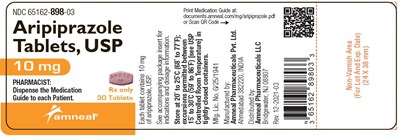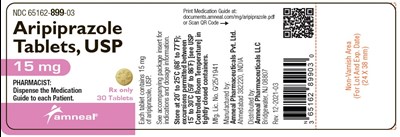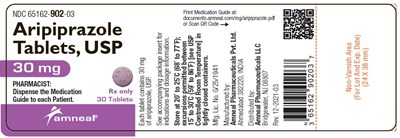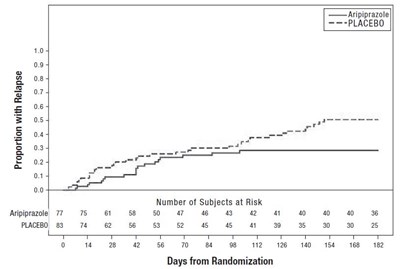Product Images Aripiprazole
View Photos of Packaging, Labels & Appearance
- c103b8f2-figure-01 - aripiprazole tablets 1
- 2 mg label - aripiprazole tablets 10
- 5 mg label - aripiprazole tablets 11
- 10 mg label - aripiprazole tablets 12
- 15 mg label - aripiprazole tablets 13
- 20 mg label - aripiprazole tablets 14
- 30 mg label - aripiprazole tablets 15
- Fig-1 - aripiprazole tablets 2
- Fig-2 - aripiprazole tablets 3
- Fig-3 - aripiprazole tablets 4
- Fig-4 - aripiprazole tablets 5
- Fig-5 - aripiprazole tablets 6
- Fig-6 - aripiprazole tablets 7
- 01 - aripiprazole tablets 8
- 0102 - aripiprazole tablets 9
Product Label Images
The following 15 images provide visual information about the product associated with Aripiprazole NDC 65162-902 by Amneal Pharmaceuticals Llc, such as packaging, labeling, and the appearance of the drug itself. This resource could be helpful for medical professionals, pharmacists, and patients seeking to verify medication information and ensure they have the correct product.
20 mg label - aripiprazole tablets 14
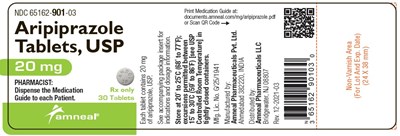
This is a medication guide for Aripiprazole, which is used to treat mental/mood disorders such as bipolar disorder, schizophrenia, and depression. It includes dosage instructions and possible side effects. Pharmacists are advised to dispense this guide to each patient. There is also a QR code on the document.*
Fig-1 - aripiprazole tablets 2
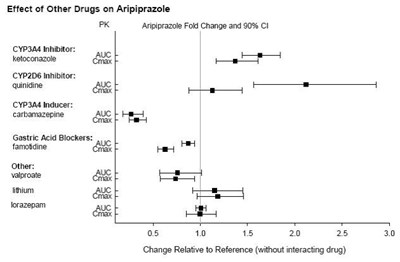
This text seems to be a table showing the effect of other drugs on Aripiprazole, with details about different inhibitors, inducers, and blockers. It includes fold change and confidence intervals to assess the relative change to the reference value when interacting with other drugs. It is likely information for medical professionals to determine potential drug interactions for patients taking Aripiprazole.*
Fig-2 - aripiprazole tablets 3
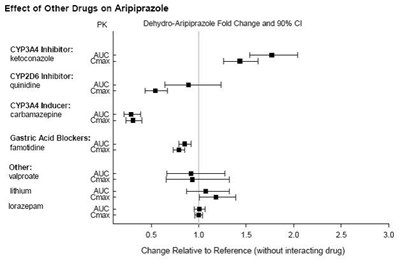
This text appears to be a chart or table with information about the effect of other drugs on aripiprazole. The drugs listed include ketoconazole, Y206 inhibitors, carbamazepine, famotine, valproate, and lorazepam. The chart also includes a "Fold Change" and a percent change, but without additional context or labels it is difficult to determine what these values indicate.*
Fig-3 - aripiprazole tablets 4
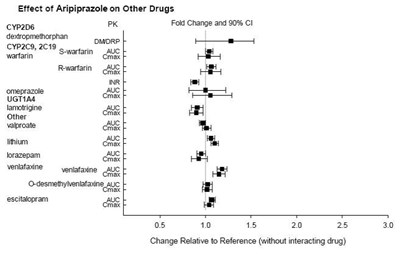
The text seems to be describing the effect of Aripiprazole on other drugs. The text contains names of various drugs such as dextromethorphan, omeprazole, valproate, Escitalopram, lorazepam, etc. along with their corresponding codes and reactions. The text also mentions a fold change and a 90% I for some drugs, but there is not enough information to know precisely what this refers to. Overall, it seems to be a pharmacological study or report.*
Fig-4 - aripiprazole tablets 5
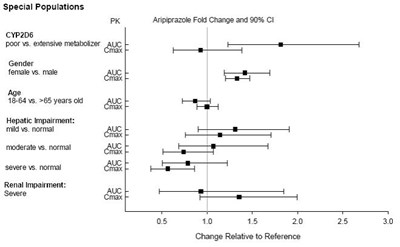
This text seems to be presenting a comparison between special populations based on factors such as metabolic rate, age, gender, hepatic impairment, and renal impairment. It also mentions a drug called Avipiprazole and presents its fold change and 90% confidence interval on a graph. However, the information is not clearly organized, and it may not be possible to fully understand the context and purpose without additional information.*
Fig-6 - aripiprazole tablets 7
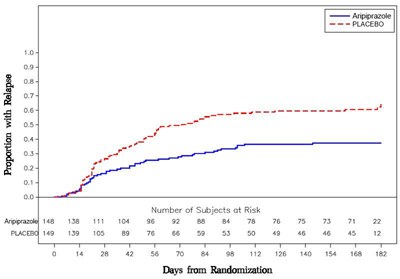
This appears to be a graph showing the proportion of people who experienced a relapse while taking Avipiprazole versus placebo over a certain period of time (measured in days from randomization). The numbers along the bottom and left side likely indicate the number of participants experiencing a relapse at each point in time.*
0102 - aripiprazole tablets 9
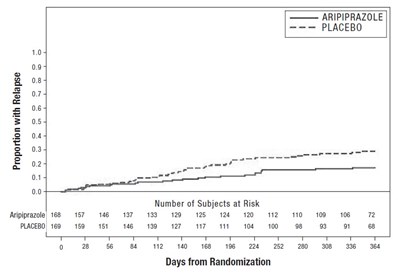
A clinical trial was conducted to compare the effectiveness of aripiprazole and a placebo treatment. The graph shows the proportion of subjects who experienced relapse over time (days from randomization). The study involved 168 to 72 subjects who received aripiprazole and 160 to 68 subjects who received the placebo. The results suggest that aripiprazole was more effective than the placebo in preventing relapse.*
* The product label images have been analyzed using a combination of traditional computing and machine learning techniques. It should be noted that the descriptions provided may not be entirely accurate as they are experimental in nature. Use the information in this page at your own discretion and risk.

